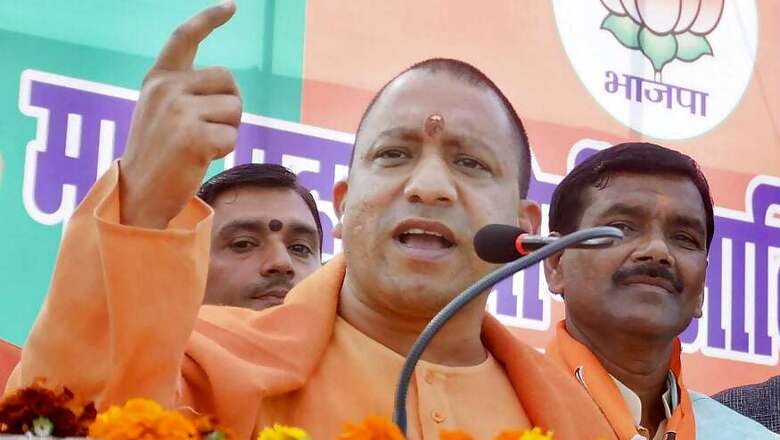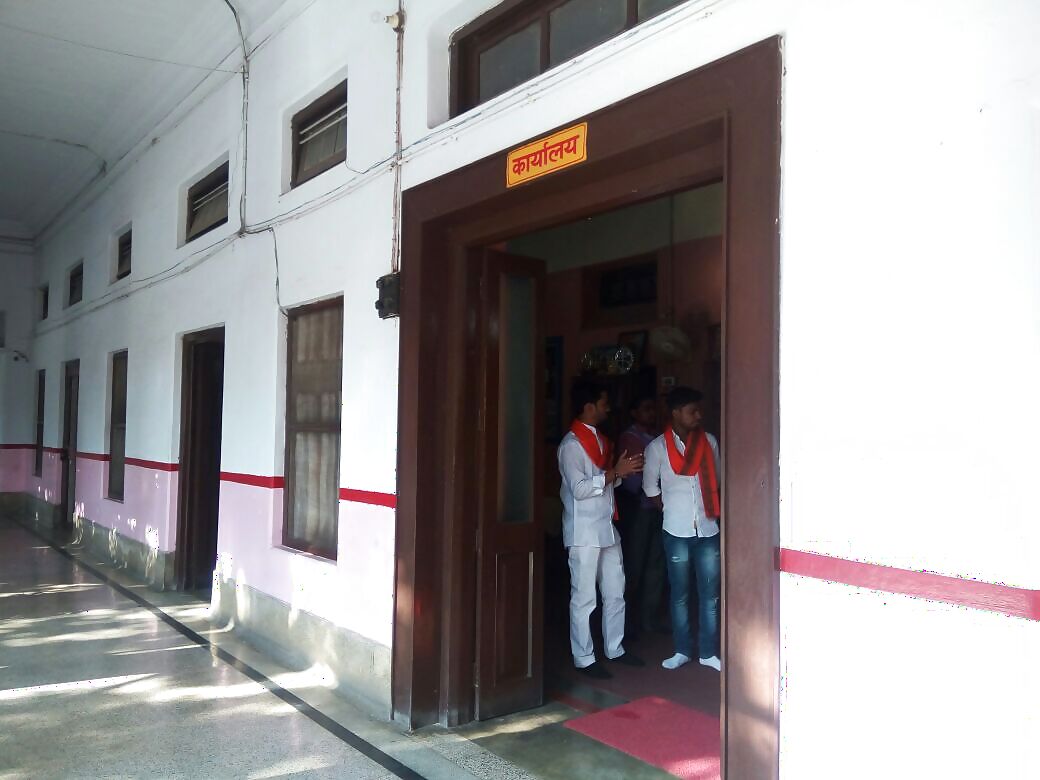
views
'Agla agna hogba to hey avadhu tu hova paani’
If the person next to you is fire, then hey sadhu you should be water.
-Gorakh Vani
At about 1pm in Gorakhpur, Sunil Singh, the head of Hindu Yuva Vahini, was talking about Muslims he had murdered.
“Were you part of 2007 riots?”
“Haan... eint ka jawaab pathhar se diya… hamare ek bhai maroge, tumhare chaar bhai maarenge. Ek Musalmaan ne Dalit ladki ka balaatkaar kiya tha, jaan se maar diya tha. Mohan Munder village Kaptangunj mein, ek bhi Mussalman ka ghar nahi bacha. Sabke ghar jalaye. Theek se jalayee. Bum feke. Goliyan chalai. Do teen udhar se bhi mare.” (We gave them a fitting reply. If you kill one of us, we will kill four of you. A Muslim man raped a Dalit girl, killed her. In Mohan Munder village, not a single Muslim house was spared. All houses were burnt, bombed, fired at.”
For 25 years, Singh has been the head of Hindu Yuva Vahini, a private army of five-time Gorakhpaur MP Yogi Adityanath, who himself has been booked for making hate speeches, and was arrested during 2007 riots.
Standing in Gorakhpur, it’s difficult to believe that this city was once the spiritual headquarters of Nathpanthis, a tradition of mystics called kaan-phatas (because of their custom of piercing one ear), who trace their lineage to the Adiyogi, Lord Shiva. The Nath monks were known more for leading progressive and reformist movements across the subcontinent, which even inspired Kabir Das and Guru Nanak.
Manoj Singh, a local journalist and a scholar on Gorakhnath Mutt, offers a valid poser. “Ever since Adityanath became the Mahant of this Mutt, I have not once heard a verse of Gorakh Vaani from him,” he said.
“Why would the Mahant of one of the most popular and oldest Mutts not even discuss the ideas and literature of his Mutt?" he asks.
Singh ends that question with his own conclusion. “Maybe he doesn’t know Gorakh Vaani himself, or maybe he’s read it and knows that the idea behind those powerful verses actually undermines his own position.”

Nathpanthis had no connection with politics or even the wider society. They set up their centres well outside busy settlements to spend time alone meditating.
“Its followers were mainly Dalits, Nishads and a few Muslims who were turned away by Brahmins under the prevalent sanatan systems. They came together to sing Gorakh Vaani,” Singh said.
Even today, several villages like Lohra and Sathiaun in Azamgarh, and Koth in Balia are comprised mainly of Muslim jogis, who, wearing saffron robes, set out and sing Gorakh Vaani throughout the country.
“Nathpanth was a unique ideology that was neither dwait nor adwait. It was about purity of the soul. Even Prophet Mohammad finds mention and praise in Gorakh Vaani. This was a popular centre of meditation, not of politics as the case is today,” said Professor Chittranjan Mishra, head of department (Hindi), Gorakhpur University.
Another Gorakh Mutt scholar, Professor Pramod Pandey, who heads the sociology department, Gorakhpur University, claims Adityanath with his aggressive Hindutva agenda has distorted the Nathpanthi ideology.
“Nathpanth kabhi ugr Hindutva soch nahi thi (Nathpanth was never about hardline Hindutva). It was a progressive, reformist movement based on Gorakh Vaani, which for its literary and sociological value, is taught even today to our students.”
Experts claim the transition from spirituality to reactionary politics began around 100 years ago with the arrival of Mahant Digvijay Nath, who was also one of the founders of the Hindu Mahasabha. His name came up during the investigation into Mahatma Gandhi’s assassination.
And then came the turn of his disciple Avaidyanath, who is all set to be the next Uttar Pradesh CM.
“There are hints that the Mahants before Digvijay Nath were Dalits. But with him Hindutvasation and Kshatriyakaran of the Mutt started. He was a kshatriya and so were his two followers. Slowly, images and sculptures of Ram and Hanuman and verses from Ramayan started replacing images of Gorakhnath and his verses. It expanded from a humble fireplace to a 52-acre campus,” said Manoj Singh.
He added, “But things changed drastically with Adityanath. There is something about Adityanath that distinguishes him from the previous Mahants.”
‘Habak na chalba, thabak na chalba, dheere dharba paon,’ goes a line of Gorakh Vaani. (Do not walk fast or jump, O selfless Sadhu, place your feet slowly.)
During campaigning for UP elections, Adityanath emerged as the BJP’s power-centre in Poorvanchal. Since he jumped into electoral politics, in 1989, the party had maintained dominance over the area’s MLAs, city mayors, and Parliamentary seat.
On the other hand, though, he has not really achieved much outside Gorakhpur. In the 41 Assembly seats in the Gorakhpur–Basti belt under his leadership, the party has never secured more than 11 seats. This shows how, in this belt, which has a high percentage of Dalits, Adityanath has been popular only among few upper caste Hindu voters.




















Comments
0 comment